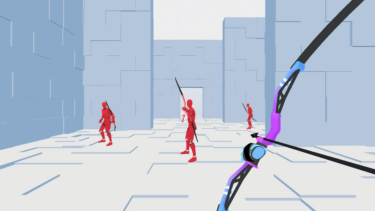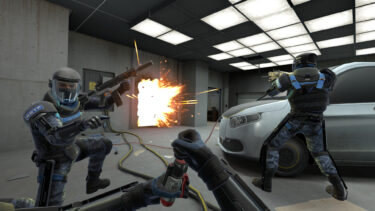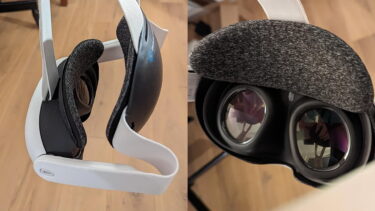On Meta Quest 3, Assassin’s Creed Nexus VR renders its cities in a very high resolution. A rendering technique developed by Meta makes this possible.
The VR game was released yesterday exclusively for Meta Quest, and the press is praising Ubisoft’s first VR title of the series. Ben was thrilled as well. In his review of Assassin’s Creed Nexus VR, he writes
Beyond the resolution of Quest 3 displays
Assassin’s Creed Nexus VR features large, freely explorable cities with an impressive draw distance. This is unusual for a standalone VR headset. Even more amazing is the resolution at which they are rendered.
Team Beef, known for their VR ports of classic first-person shooters, determined the render resolution using Meta’s proprietary benchmarking tool, OVR Metrics. The VR game renders at 2,163 x 2,288 pixels per eye. This is higher than the resolution of Quest 3’s displays, which are 2,064 x 2,208 pixels per eye. So Ubisoft still had some performance headroom for supersampling.
The default resolution for VR games on Meta Quest 3, also called the default eye buffer, is 1,680 by 1,760 pixels per eye. This means that Assassin’s Creed Nexus VR renders over 50 percent more pixels than most Quest 3 games.
Unfortunately, the render resolution of the Quest 2 version of the game has not been determined by Team Beef.
Meta’s render technique doubles frame rate
Nexus VR’s stunning visuals and high resolution are made possible in part by a rendering technique called Application Spacewarp, or AppSW, which can squeeze up to 70 percent more CPU and GPU performance out of the Quest 2 and 3 chipsets.
The performance gain is achieved by rendering the VR game at half frame rate instead of full frame rate and using AppSW to artificially generate every missing second frame.
The benchmarking tool shows that Assassin’s Creed Nexus VR actually renders at only 45 frames per second, which significantly reduces the load on the Quest 3’s chipset. AppSW then ensures that the frame rate is artificially doubled to a smooth 90 frames per second.
This technique is rarely used in VR games because it needs to be well implemented and has some drawbacks: It can cause artifacts in certain cases. However, the negative effect is hard to detect for most people.
Source: Mixed News







